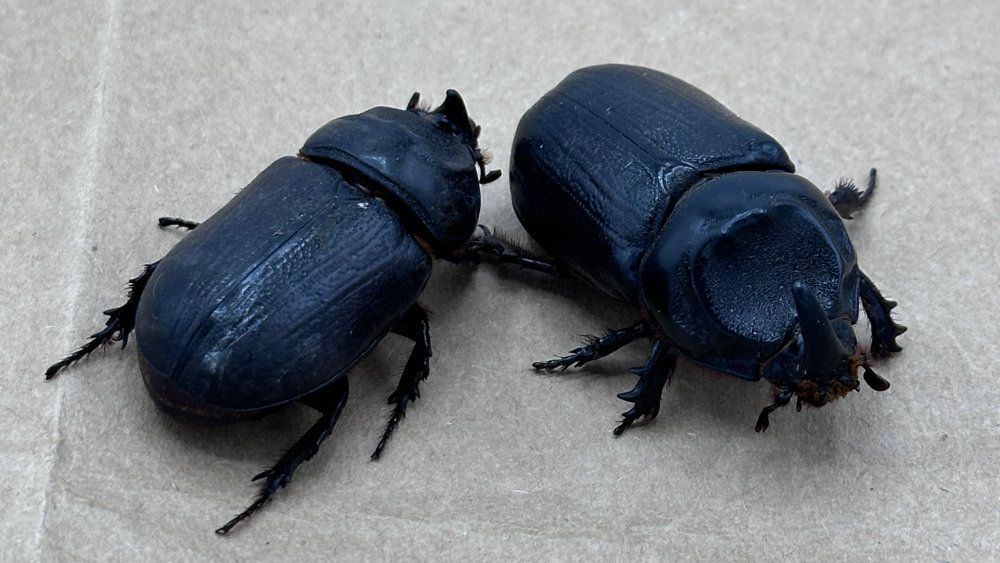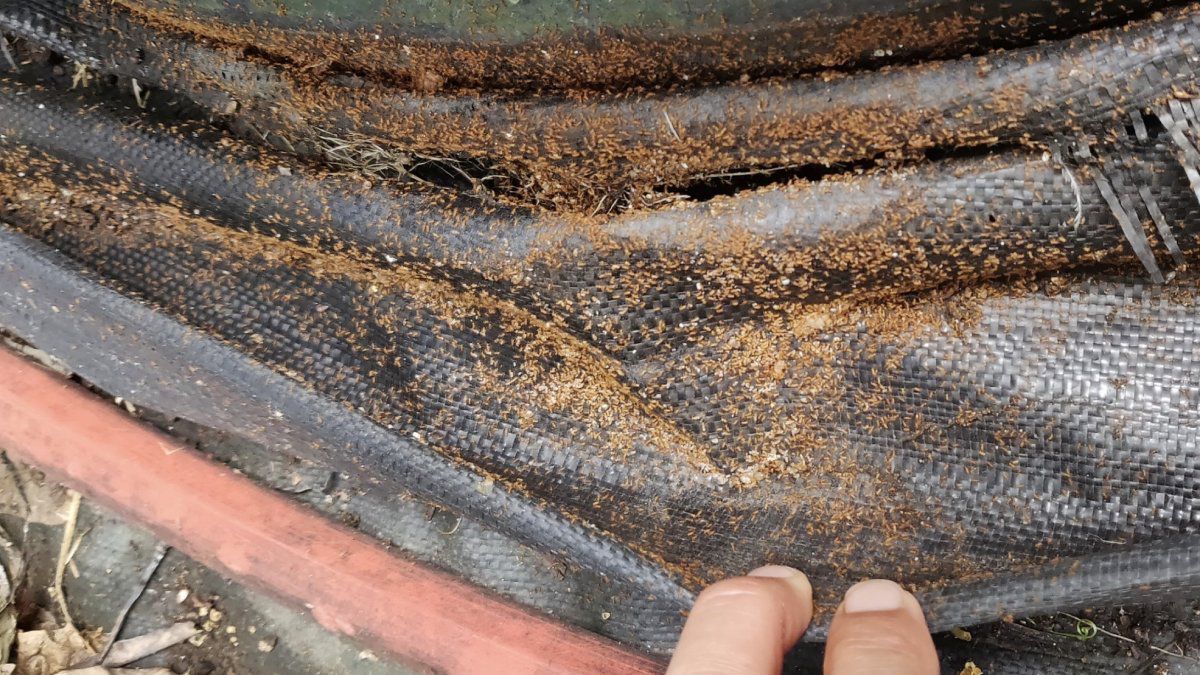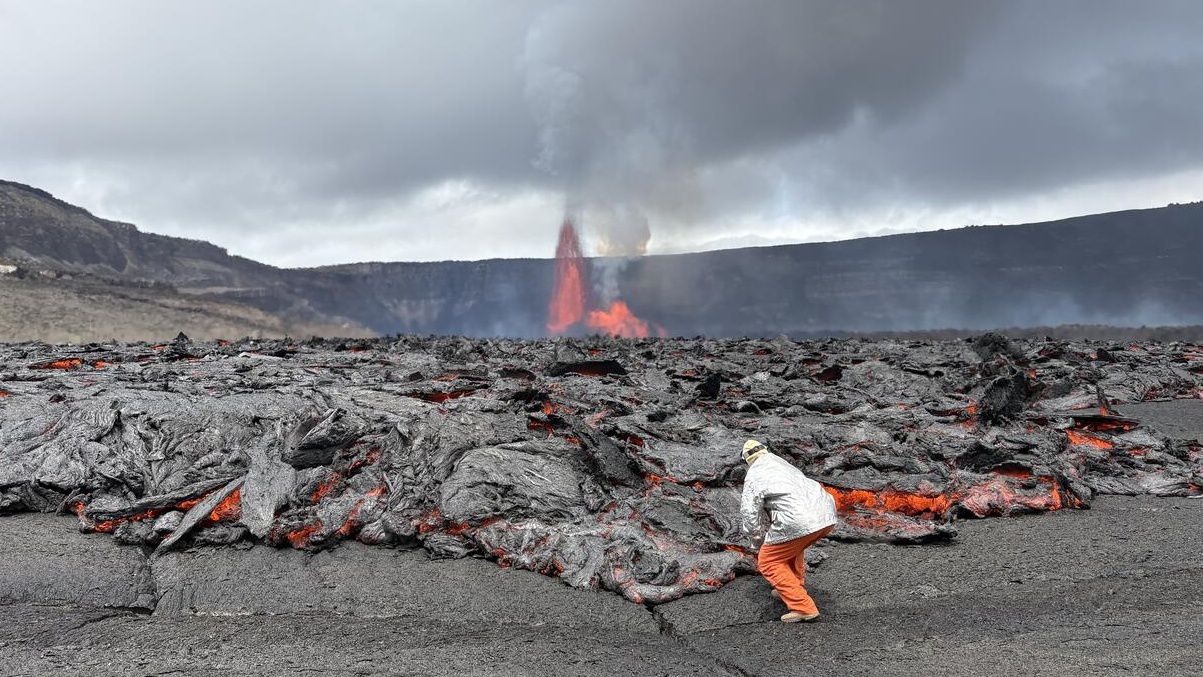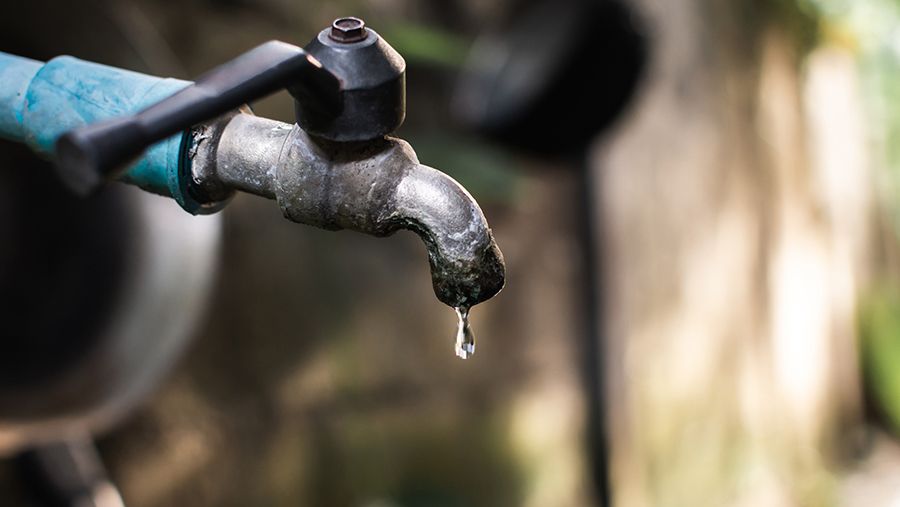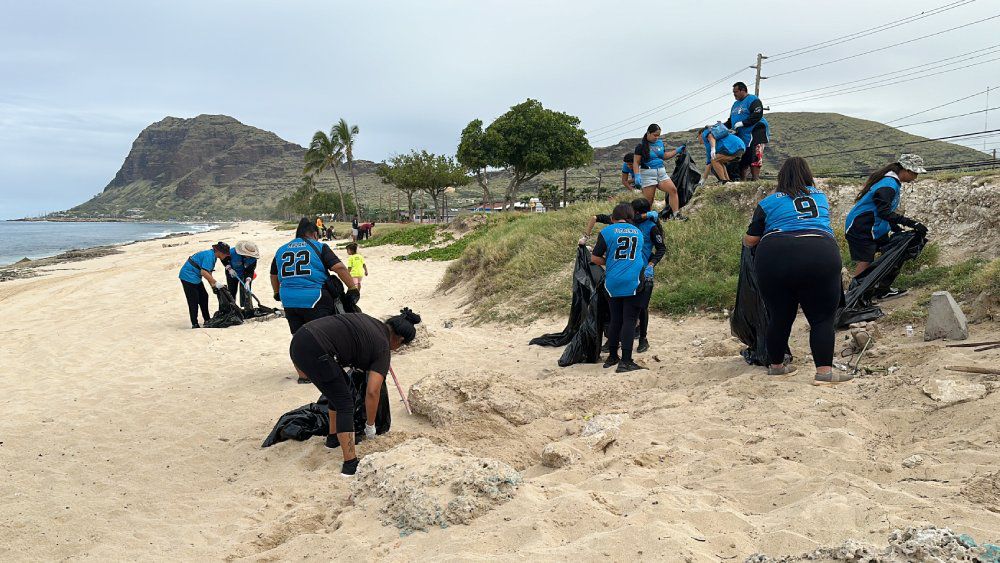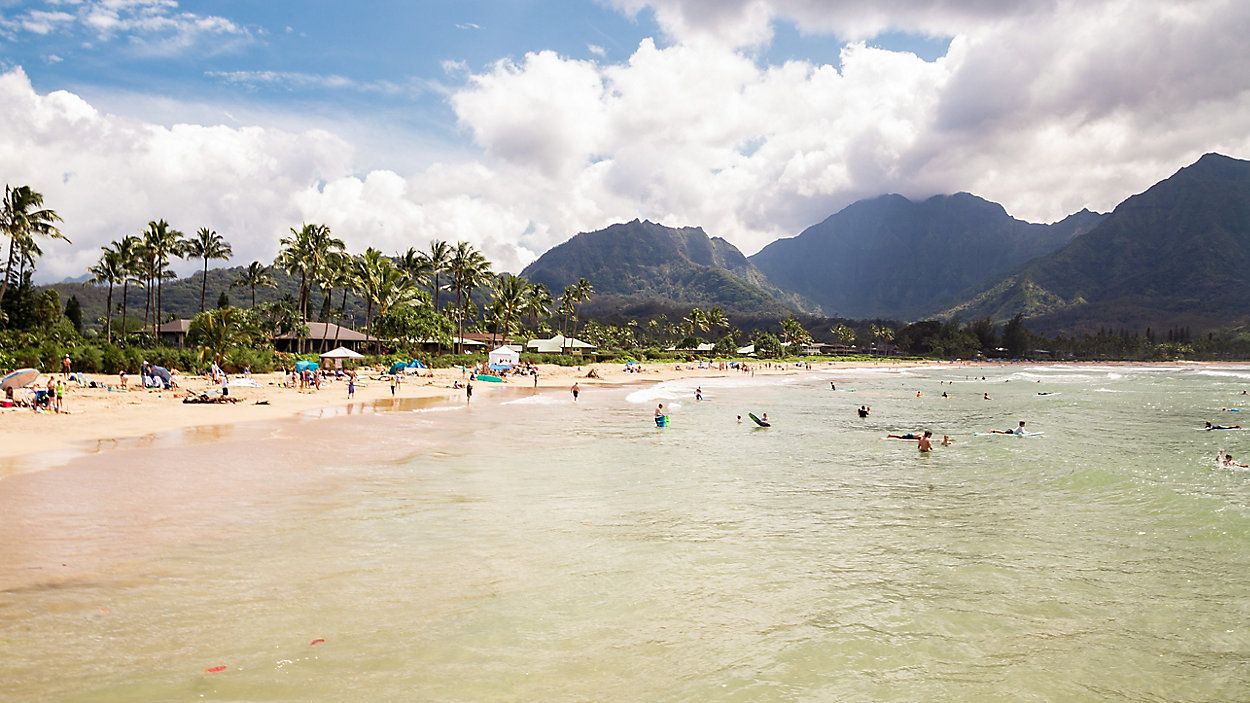First discovered in October 2023 in Waikoloa, the invasive coconut rhinoceros beetle continues to make a showing on Hawaii Island, the latest being on March 4 in traps at the National Energy Laboratory of Hawaii Authority. However, Hawaii County, state agencies, teams from the University of Hawaii at Manoa and the Big Island Invasive Species Committee are working together to put an end to the beetles and the destruction they cause.
Since January, the Hawaii Department of Agriculture has been working with the Hawaii County Public Works Department to prevent CRB infestations. The latest round of treatments was conducted on palm trees last week at Ellison Onizuka Kona International Airport.
“The staff of the Department of Agriculture remains dedicated to stopping the further spread of the coconut rhinoceros beetle, with emphasis in areas that are not known to be infested,” said Hawaii Board of Agriculture Chair Sharon Hurd in a release.
“We truly appreciate the concern and assistance of Mayor Kimo Alameda and the county’s public works crew in providing the resources to prevent CRB from taking hold on Hawaii Island. We also appreciate all the various agencies and organizations that work tirelessly in the fight against invasive species,” Hurd said.
Emphasizing the importance of the state and county working collaboratively to protect the island from invasive species, Mayor Kimo Alameda stated, “The introduction of the coconut rhinoceros beetle is a major concern, and we are committed to doing everything we can — alongside HDOA and our other partners — to stop its spread.”
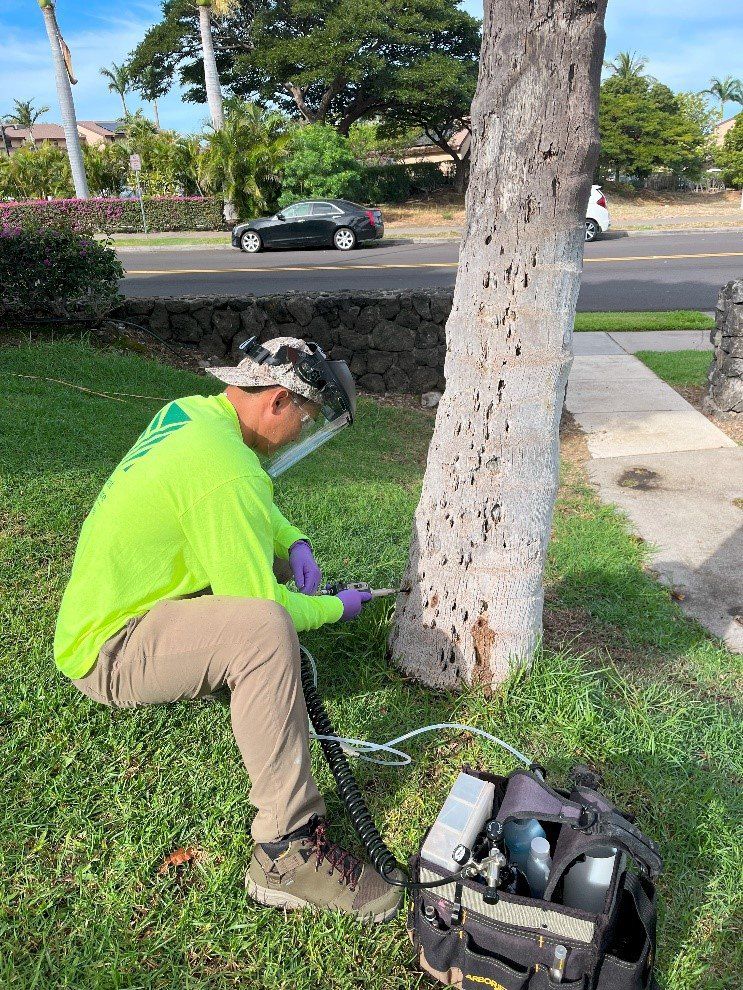
The initial discovery of CRB on the island was in October 2023 when a Waikoloa resident found six grubs (larvae) in a decaying palm tree stump.
Four adult beetles were found in Waikoloa April 2024 and another in September 2024 when a HDOA Plant Pest Control personnel found a single CRB in a trap during routine monitoring.
On Jan. 14, 2025, HDOA and county crews utilized the county’s 75-foot boom truck to treat 38 trees in the Waikoloa area via crown treatments; 24 trees were treated via an injection that provides systemic protection against CRB. There have been no additional CRB detections in Waikoloa thus far, according to HDOA.
In March, the BIISC reported a total of eight adult CRB were captured in and near Ellison Onizuka Kona International Airport.
Over three days, a team comprised of HDOA personnel, county crews and Hawaii Department of Transportation staff used two boom trucks to treat 128 trees at the airport and injected 12 trees inaccessible to the trucks.
According to BIISC, more palms in the area are scheduled for treatment in the coming weeks.
Two adult beetles were also found in traps at the NELHA where crews treated 58 trees via crown treatments and injected 14 trees because of their close proximity to water over two days, April 7 and 8.
HDOA, BIISC, the University of Hawaii CRB Response Team and the College of Tropical Agriculture and Resilience, County of Hawaii and the state Department of Health Vector Control Branch continue their surveillance of CRB, looking into any potential breeding locations in the area near the airport, focusing on sites of decomposing material such as mulch or green waste piles.
According to BIISC, the beetles spend most of their lives as developing larvae in decomposing material, and as adults, return to breed there in between feeding, on their preferred host palms. The agency says unmanaged piles of green waste are at the highest risk for breeding and therefore encourages residents to take their green waste to a county facility where piles are being heated and managed to kill pests such as CRB.
To help fight the spread of CRB, residents on all islands are asked to remain vigilant and inspect bags of mulch, compost and soil products for evidence of entry holes when purchasing these items. HDOA says CRB grubs breed in decomposing plant and animal waste. Adult beetles are about two inches in length, all black with a single horn on its head.
BIISC says targeted early detection has been offered to resorts and landscapers along the Waikoloa to Kona coast to help them recognize and respond to any CRB sightings. The agency also continues to offer free backyard surveys in Waikoloa Village in partnership with Hawaii Detection Dogs, LLC.
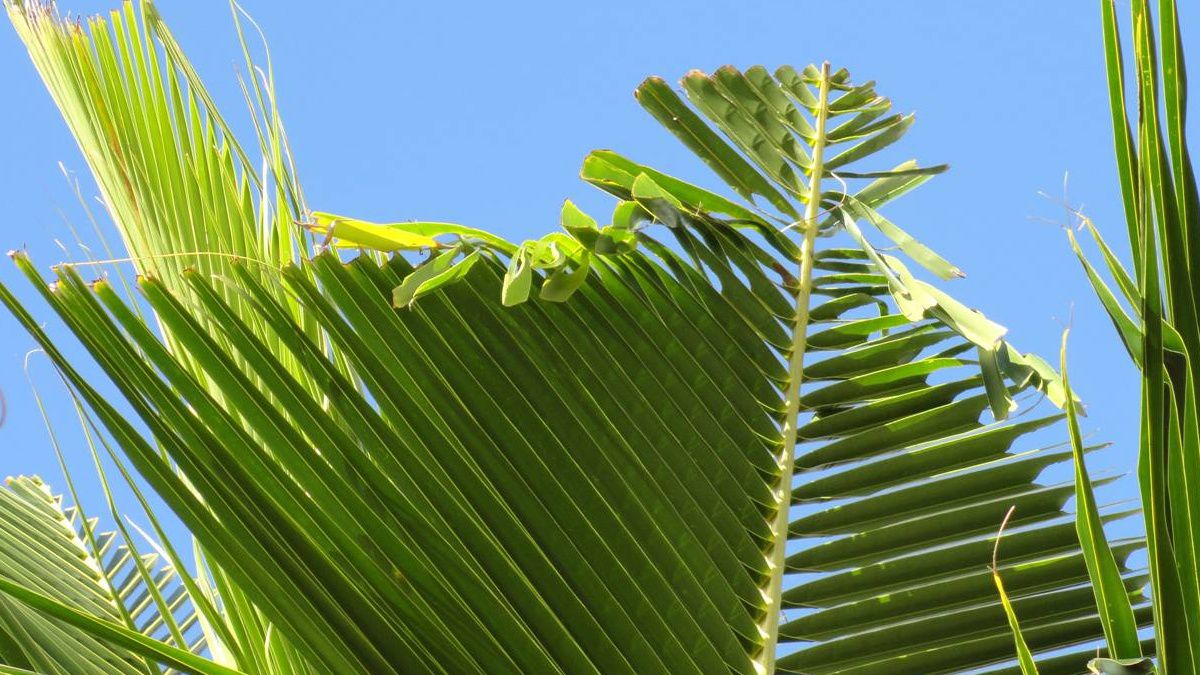
The invasive CRB is a serious threat to palm trees, primarily coconut palms, as adult beetles bore into the crowns, accessing the soft tissue where developing fronds are located. “After boring into the crown, the adult beetles will feed on the sap and juices that are exuded,” explained Kawehi Young, public outreach coordinator for BIISC.
Young says in the crown of a coconut palm are several developing fronds tightly clustered together, including the “apical meristem,” the growing point or bud — the true heart of the tree. The beetle doesn’t always reach the apical meristem directly; it depends on where it bore into the tree.
“If a beetle misses the apical meristem, the tree will likely survive that feeding event and damaged fronds will emerge that have v-shaped cuts with scalloped edges,” said Young. On the other hand, “if the apical meristem is hit — especially multiple times ore by multiple beetles — the tree may not recover. The growing point can rot or collapse, which can lead to death of the entire crown.”
HDOA says tree mortality has been reported to be anywhere from 10% to 50%. Infested trees are a hazard as damaged fronds could break and fall when fully opened; dead trees could also fall unexpectedly after the trunk rots.
According to Young, the crown spray is a contact treatment whereas both injections and soil drenches are systemic treatments. Both systemic treatments — injection and soil drench — are residual and provide protection for up to one year.
“The crown treatment is a stream of insecticide delivered directly into the crown via drone or lift truck and will kill any beetles that are actively feeding on the palm,” said Young. “It’s not a foliar treatment applied to all the fronds; it’s focused on just the crown. This treatment does provide some residual protection from anywhere between one to four months depending on the product used.” The different palm treatment options include injection, soil drench, crown spray, netting and sand.
Kamran Fujimoto is HDOA’s Hawaii Island noxious weed specialist. He explains that all trees that have received crown treatments have had or are in the process of having their fruits removed and destroyed via composting or chipping.
“The trees which have had the systemic injections did not — at the time of application — have any fruits on them. We tagged some trees with the caution tape in areas that the public may access,” said Fujimoto.
Treated trees have been tagged with yellow tape that encircles the trunk and warns the public that coconuts from treated trees should not be consumed. Anyone with questions regarding pesticide use can contact HDOA’s Pesticides Branch at 808-973-9402.
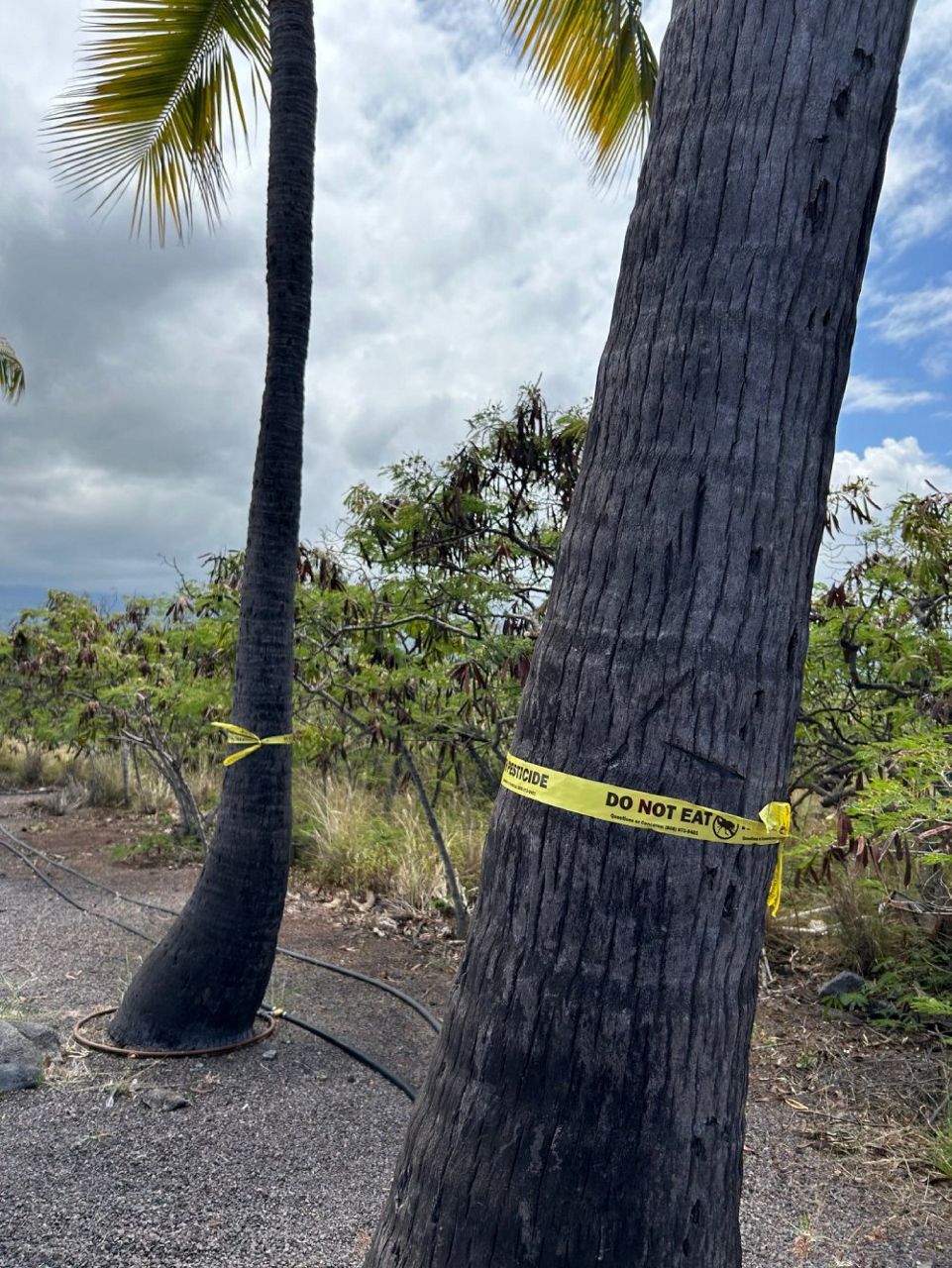
CRB have now been found across the islands — the first discovery on Oahu in Dec. 2013 at Joint Base Pearl Harbor-Hickam; on Kauai in May 2023 when the Kauai Invasive Species Committee found a CRB near Lihue Airport; on Maui in Sept. 2023 when a dead CRB was found in a bag of compost followed by 17 live CRB found Nov. 2023 in Kihei; and in Waikoloa on Hawaii Island in Oct. 2023 when five CRB grubs were found in a decaying palm tree stump on private property.
The discovery of beetles has continued into 2025, but the county and multiple agencies are working to get them under control.
Visit the CRB Response website to learn more about detecting signs of CRB damage and how to identify its life stages.
Report any possible CRB infestation to the state’s toll-free Pest Hotline at 808-643-PEST (7378).
Because other beetle larvae on the island look similar to CRB, BIISC suggests taking video and photos of the grubs from various angles and submitting them by emailing biisc@hawaii.edu, as well as through the BIISC pages on Facebook, Instagram or at 643Pest.org.
Editor's note: This article has been updated with information by the Big Island Invasive Species Committee and Hawaii Department of Agriculture. (April 18, 2025)
Sarah Yamanaka covers news and events for Spectrum News Hawaii. She can be reached at sarah.yamanaka@charter.com.


